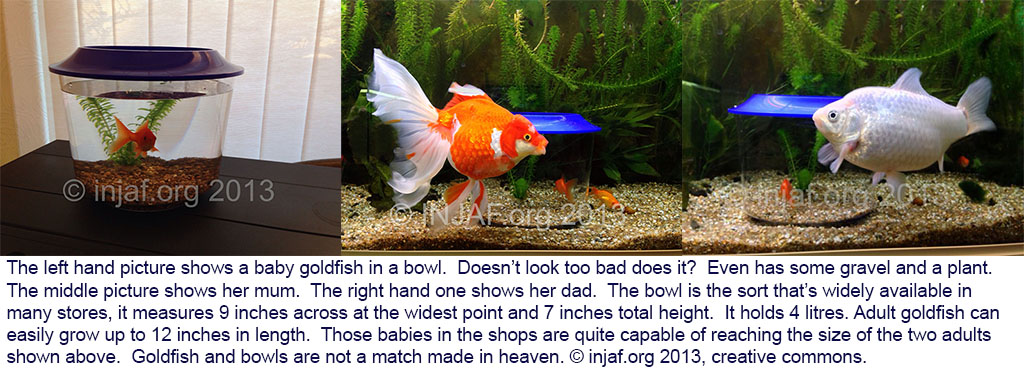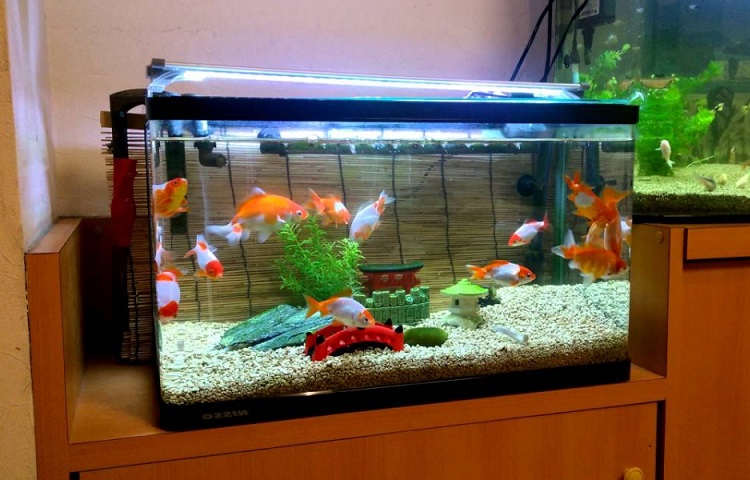Goldfish are a popular choice for pet owners. They are beautiful and relatively easy to care for.
But, goldfish need specific tank conditions to thrive. Understanding goldfish tank requirements is crucial for their health. Many new owners make mistakes, leading to unhappy or unhealthy fish. Goldfish need more than just a bowl of water. They require a proper tank setup with the right size, filtration, and water quality.
This introduction will guide you on the essentials to keep your goldfish happy and healthy. By learning these requirements, you can create a perfect home for your goldfish. Let’s dive into what your goldfish truly needs.
Tank Size
Choosing the right tank size is crucial for your goldfish’s health. Goldfish need space to swim and grow. A small tank can lead to stress and illness. Below, we explore the minimum requirements and why size matters.
Minimum Requirements
Goldfish need a lot of room. For one goldfish, a minimum of a 20-gallon tank is required. For each additional goldfish, add 10 more gallons.
| Number of Goldfish | Minimum Tank Size |
|---|---|
| 1 | 20 gallons |
| 2 | 30 gallons |
| 3 | 40 gallons |
These numbers are just the starting point. Larger tanks are always better.
Why Size Matters
Goldfish produce a lot of waste. A larger tank helps dilute this waste. This keeps the water cleaner and the fish healthier. Small tanks can quickly become toxic for goldfish.
Goldfish also need room to swim. They are active and curious. A larger tank provides them with space to explore and stay active.
A small tank can stunt a goldfish’s growth. Goldfish can grow up to 12 inches long. They need enough space to reach their full size.
In summary:
- Larger tanks dilute waste better.
- More space means healthier, more active fish.
- Proper tank size allows goldfish to grow fully.
Remember, happy goldfish need a spacious home.
Water Quality
Maintaining good water quality is essential for the health of your goldfish. Poor water quality can lead to stress, disease, and even death. Therefore, it’s crucial to ensure that your tank water is clean and properly maintained.
Filtration System
A filtration system is vital for a goldfish tank. Goldfish produce a lot of waste, which can quickly pollute the water. A good filter helps remove this waste and keeps the water clean. There are three types of filtration systems:
- Mechanical filtration removes debris and particles from the water.
- Chemical filtration eliminates toxins and chemicals.
- Biological filtration uses beneficial bacteria to break down harmful substances.
Choose a filter that can handle the size of your tank. Ensure it provides all three types of filtration. This ensures your goldfish live in a healthy environment.
Regular Water Changes
Performing regular water changes is another key to maintaining water quality. Even with a good filter, waste and toxins can build up over time. Changing part of the water in the tank helps remove these substances and keep the water fresh.
Follow these steps for effective water changes:
- Turn off the filter and remove about 20-30% of the water.
- Replace it with fresh, dechlorinated water.
- Turn the filter back on and check for proper function.
Conduct water changes weekly. This keeps the water clean and ensures a healthy environment for your goldfish.
| Task | Frequency |
|---|---|
| Check water parameters | Weekly |
| Water change (20-30%) | Weekly |
| Filter maintenance | Monthly |
Temperature Control
Temperature Control is crucial for maintaining a healthy environment for your goldfish. An incorrect temperature can cause stress and health issues. Ensuring the right temperature range is essential for their well-being.
Ideal Temperature Range
Goldfish thrive in a specific temperature range. The ideal temperature for goldfish is between 65°F and 75°F. Keeping your tank within this range helps maintain their health and activity levels.
Temperatures below 60°F can slow down their metabolism. Temperatures above 80°F can increase stress and lead to health problems. Use a reliable aquarium thermometer to monitor the water temperature regularly.
Heating And Cooling Tips
Maintaining the right temperature can be challenging, especially during seasonal changes. Here are some tips for heating and cooling your goldfish tank:
- Heating: If the room temperature is too low, use an aquarium heater. Choose a heater with an adjustable thermostat to maintain a stable temperature.
- Cooling: If the water gets too warm, use a fan to cool the surface. You can also place frozen water bottles in the tank for temporary cooling.
| Temperature Issue | Solution |
|---|---|
| Too Cold | Use an aquarium heater |
| Too Warm | Use a fan or frozen water bottles |
Regularly check the water temperature. Adjust heating and cooling methods as needed. Consistent temperature control is key to keeping your goldfish happy and healthy.
Substrate Choices
Choosing the right substrate for your goldfish tank is crucial. It affects water quality and the health of your fish. Substrate options include gravel and sand. Each has its own benefits and drawbacks. Let’s explore these choices in detail.
Gravel Vs. Sand
Gravel is a popular substrate choice. It allows water to flow through easily. This prevents harmful gas build-up. Gravel also comes in various sizes and colors. It adds aesthetic value to the tank.
Sand offers a different look and feel. It’s soft and easy on the fish. This is important for goldfish. They like to sift through the substrate. Sand can be a natural choice for their behavior.
| Gravel | Sand |
|---|---|
| Allows water flow | Soft for fish |
| Various colors | Natural look |
| Prevents gas build-up | Good for sifting |
Cleaning Substrate
Keeping the substrate clean is essential. Dirty substrate can harm your fish. It also impacts water quality. Here are some tips for cleaning:
- Gravel: Use a gravel vacuum. This tool is effective. It removes debris and waste.
- Sand: Stir the sand gently. Use a siphon to remove debris. Be careful not to disturb the tank too much.
Regular cleaning keeps the tank healthy. It ensures a safe environment for your goldfish.
Plants And Decorations
Goldfish tanks benefit from well-chosen plants and decorations. They provide a natural habitat and keep your goldfish happy. Let’s explore the best plants and safe decorations for your goldfish tank.
Best Plants For Goldfish
Choosing the right plants is crucial. Goldfish may nibble on them, so you need hardy options.
- Anubias: These plants have tough leaves. Goldfish don’t eat them.
- Java Fern: Another tough plant. It grows well in low light.
- Hornwort: It floats in the water. It helps keep the tank clean.
- Marimo Moss Balls: These are fun and safe. Goldfish like to push them around.
These plants not only beautify the tank but also improve water quality. They absorb nitrates and provide oxygen.
Safe Decorations
Decorations add character to your tank. They should be safe and non-toxic.
| Decoration Type | Description |
|---|---|
| Smooth Rocks | Rocks should have no sharp edges. They prevent injuries. |
| Driftwood | Driftwood adds a natural look. Ensure it is aquarium-safe. |
| Caves and Hides | Provide hiding spots. Goldfish use them to feel secure. |
| Artificial Plants | Choose soft, silk-like plants. Avoid plastic ones with sharp edges. |
Safe decorations enhance the environment without harming your fish. Avoid small items that goldfish can swallow.
In summary, a well-decorated goldfish tank with the right plants and decorations ensures a healthy and happy habitat.

Credit: injaf.org
Lighting Needs
Goldfish require proper lighting to thrive in their tank environment. The right lighting not only enhances their colors but also supports their health and well-being. Understanding the different types of lighting and establishing a suitable schedule is essential for goldfish care. Let’s dive into the details.
Natural Vs. Artificial Light
There are two main types of lighting for goldfish tanks: natural and artificial. Each has its own benefits and considerations.
| Lighting Type | Benefits | Considerations |
|---|---|---|
| Natural Light |
|
|
| Artificial Light |
|
|
Lighting Schedule
Establishing a proper lighting schedule is crucial for your goldfish’s health. Goldfish need a balance of light and dark periods to maintain their biological rhythms.
- Daylight Hours: Provide 8-12 hours of light each day. Use a timer to keep the schedule consistent.
- Nighttime Hours: Ensure 12-16 hours of darkness. This helps goldfish rest and reduces stress.
- Seasonal Adjustments: Mimic natural seasonal changes by slightly altering light duration. Increase light hours in summer and decrease in winter.
Consistent lighting helps your goldfish stay healthy and vibrant. Use these guidelines to create an optimal environment.
Feeding Habits
Feeding your goldfish the right way is crucial for their health. Understanding their feeding habits helps in maintaining a healthy environment. This section covers the essentials of a balanced diet and feeding frequency.
Balanced Diet
A balanced diet is key to a goldfish’s well-being. Goldfish need a mix of proteins, carbohydrates, and fats. You can provide this through various types of food:
- Flake food
- Pellets
- Live food (like brine shrimp)
- Vegetables (like peas and spinach)
Flake food and pellets are convenient. They contain essential nutrients. Live food is a great protein source. Vegetables help with digestion. Rotate these foods for a balanced diet.
Feeding Frequency
Goldfish should be fed twice a day. Overfeeding can cause health issues. A good rule is to feed them what they can eat in two minutes. Remove any uneaten food to prevent water pollution.
Here’s a simple feeding schedule:
| Time | Food Type |
|---|---|
| Morning | Flake food or pellets |
| Evening | Live food or vegetables |
Consistency is important. Stick to the schedule for best results. Remember, a healthy diet leads to a healthy goldfish.

Credit: www.youtube.com
Health Monitoring
Ensuring your goldfish are healthy is crucial for their well-being. Regular health monitoring helps detect problems early. This ensures timely treatment and a longer life for your goldfish. Understanding common diseases and recognizing signs of a healthy goldfish can make a big difference.
Common Diseases
Goldfish can suffer from various diseases. Knowing these can help you take quick action.
| Disease | Symptoms | Treatment |
|---|---|---|
| Ich (White Spot Disease) | White spots on fins and body | Raise water temperature, use medication |
| Fin Rot | Frayed or decaying fins | Clean water, antibiotics |
| Swim Bladder Disease | Difficulty swimming, floating or sinking | Fast the fish, feed peas |
| Fungal Infections | Cotton-like growths on body | Fungus treatment, clean water |
Signs Of Healthy Goldfish
Recognizing signs of a healthy goldfish is essential. Here are some indicators:
- Active swimming and exploring
- Bright, vibrant colors
- Clear eyes
- Healthy, intact fins and tail
- Regular eating habits
- No visible spots or growths
Keep an eye on your goldfish daily. A healthy environment and proper care go a long way. Regular water changes and a balanced diet help maintain their health. If you notice any changes, take action quickly. Early intervention can prevent many problems.

Credit: www.rockingtalent.com
Frequently Asked Questions
What Size Tank Is Best For Goldfish?
A 20-gallon tank is ideal for one goldfish. For each additional goldfish, add 10 gallons. This space ensures they have enough room to swim and grow.
Do Goldfish Need A Filter?
Yes, goldfish need a filter. Filters help maintain water quality by removing waste and toxins. Clean water is crucial for their health.
How Often Should I Clean My Goldfish Tank?
Clean your goldfish tank weekly. Perform partial water changes and check the filter. Regular cleaning prevents harmful ammonia and nitrate buildup.
Can Goldfish Live Without A Heater?
Yes, goldfish can live without a heater. They thrive in cooler water temperatures, ideally between 65-75°F. Heaters are unnecessary for most goldfish tanks.
Conclusion
Caring for goldfish requires proper tank setup. Clean water and enough space are key. Choose the right tank size and include a filter. Regular maintenance keeps your fish healthy. Feed them a balanced diet. Observing their behavior helps detect issues early.
Goldfish thrive in well-maintained environments. Happy fish make happy owners. Follow these tips, and your goldfish will flourish.



